Valhelmland
Crafting a visual identity, connecting Vienna and Gothenburg through whale heritage at Röhsska Museum.
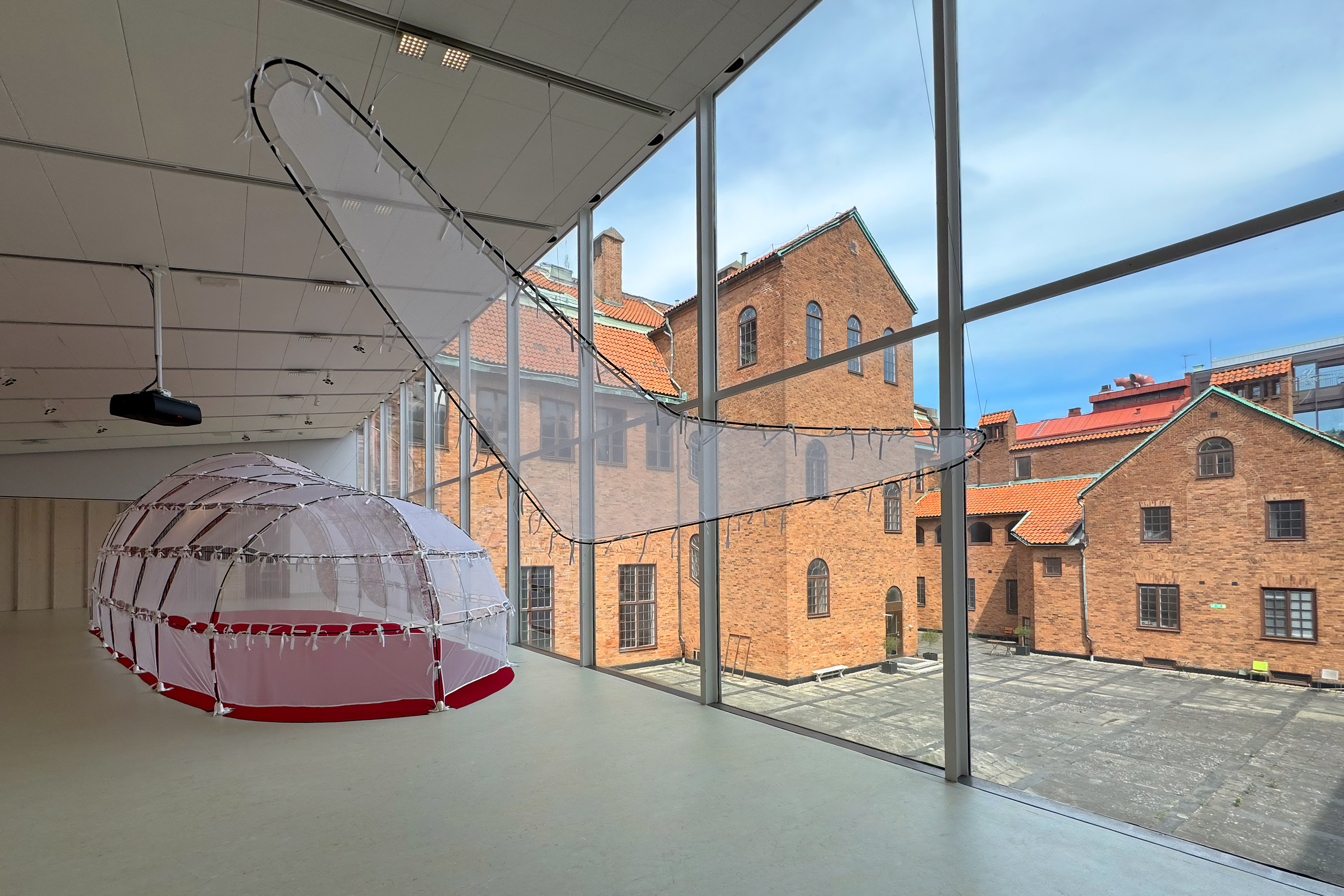
Valhelmland
In the summer of 2025, ten designers from Vienna took residence at Röhsska Museum's creative island Super Ö, transforming it into Valhelm – a temporary home where they explored how new surroundings influence design practice. Over two months, the museum became both workshop and inspiration, hosting evolving collaborations and new artefacts.
The Val in Valhelm – meaning both “choice” and “whale” – inspired a large whale pavilion that served as scenography and shared workspace, connecting Vienna and Gothenburg through a poetic architectural gesture.
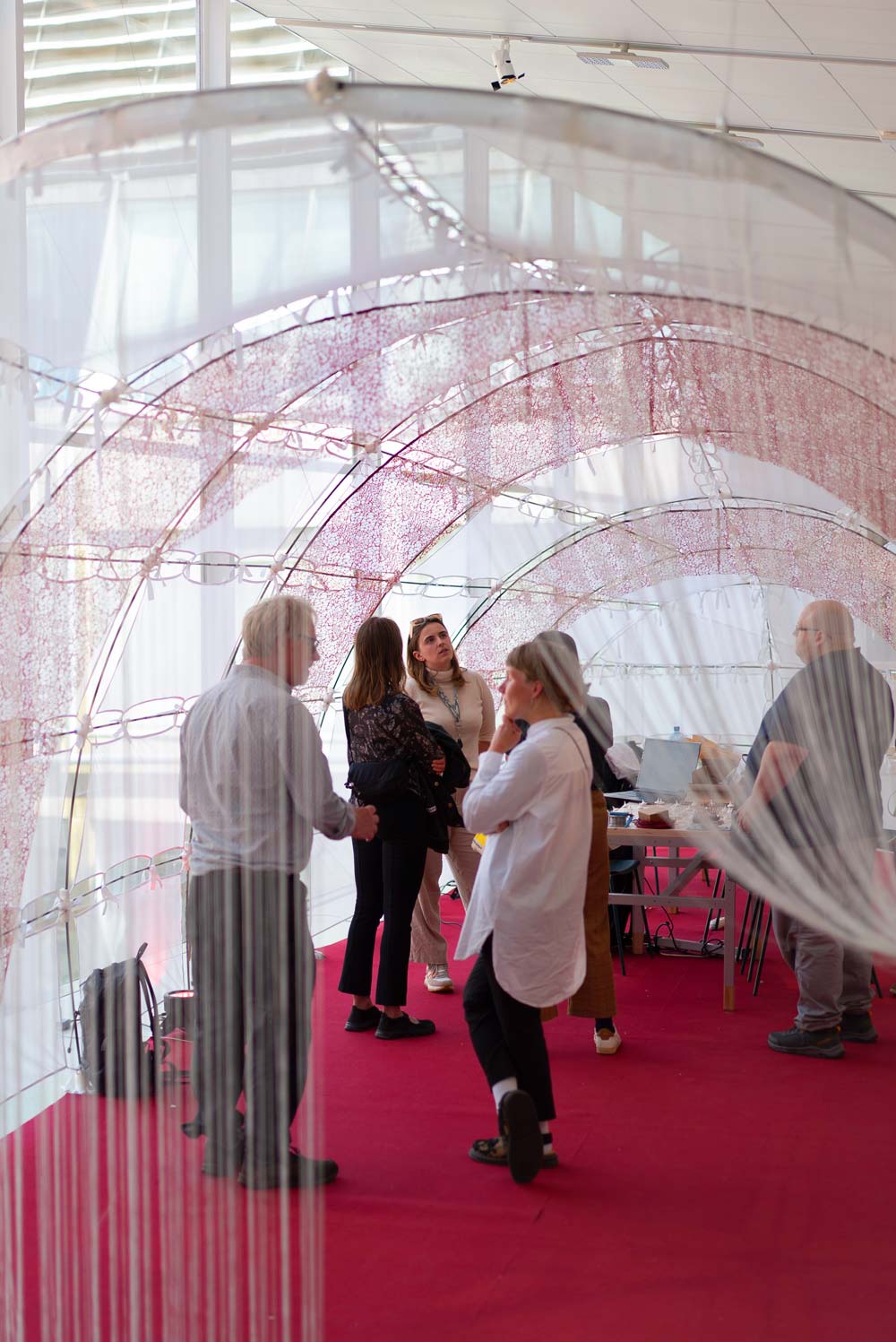
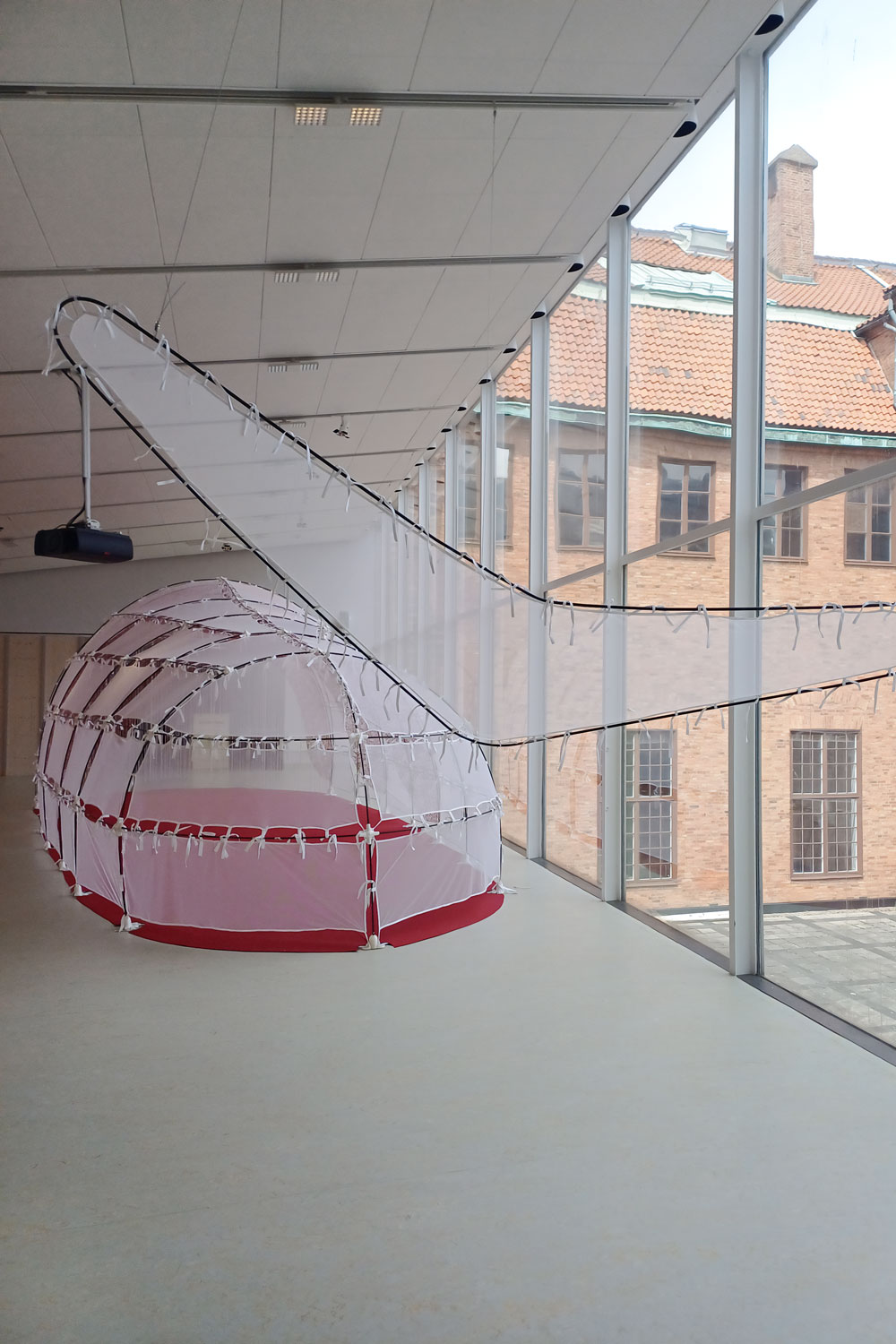
Together with Mia Meus and Blanka Wittmann, we designed this pavilion as a home for the designers in residence. While my colleagues developed the structure, I focused on material sourcing, creating small construction components for the island setup, and developing the visual and typographic identity of Valhelmland.
Two cities, two whales
To give this collaboration a setting, we began searching for stories that could connect Vienna and Gothenburg—whether through anecdotes, shared heritage, or monuments that people can still relate to today. Honestly, there wasn't much. Then my collegues stumbled upon the Malmska Valen—the only mounted taxidermied whale in the world, residing in Gothenburg of all places. We quickly drew the connection to Poldi, our very own "museum whale" here in Vienna. Though ours is made of wood and metal, both whales carry fascinating stories that eventually brought them into the museums where they sit today.
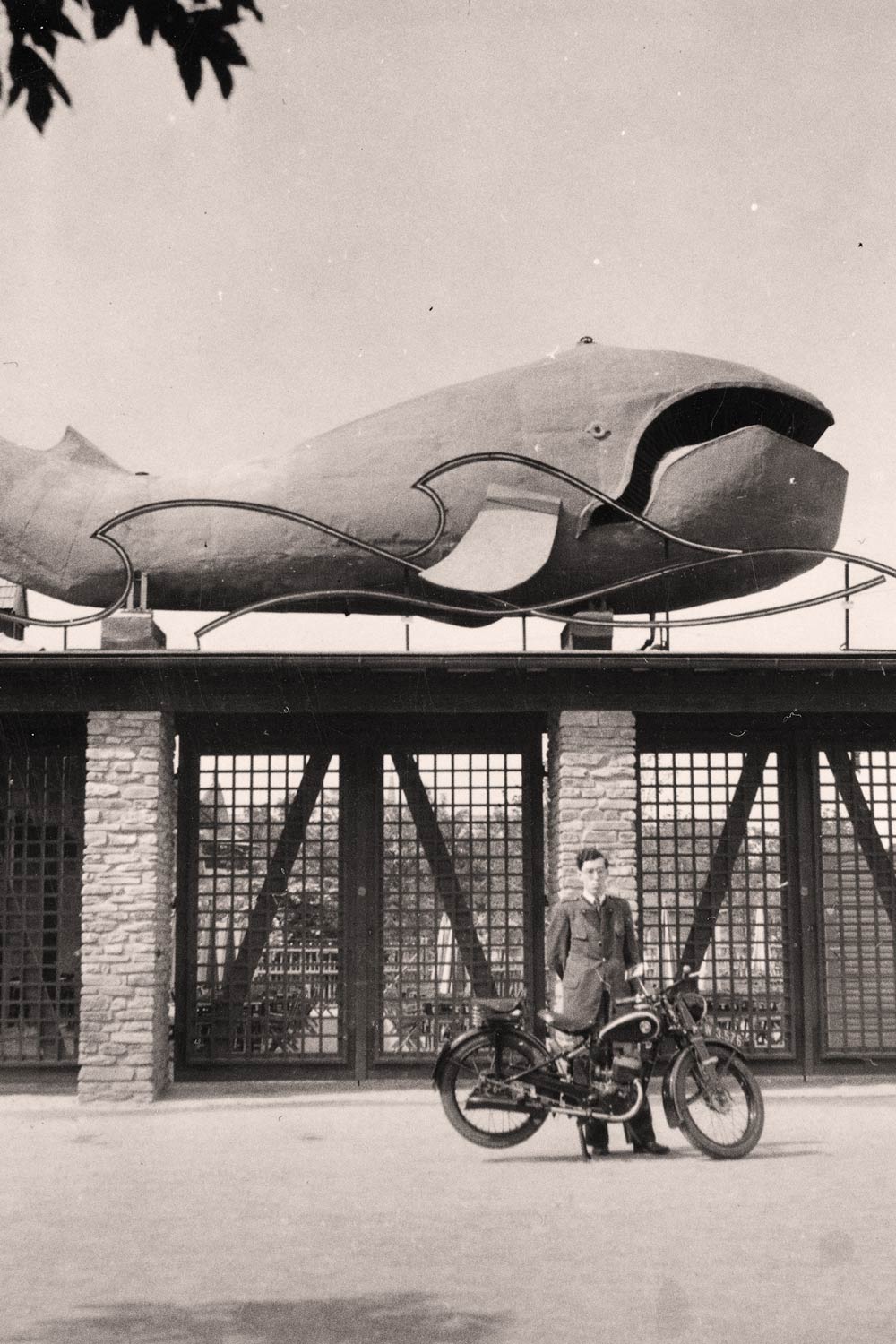
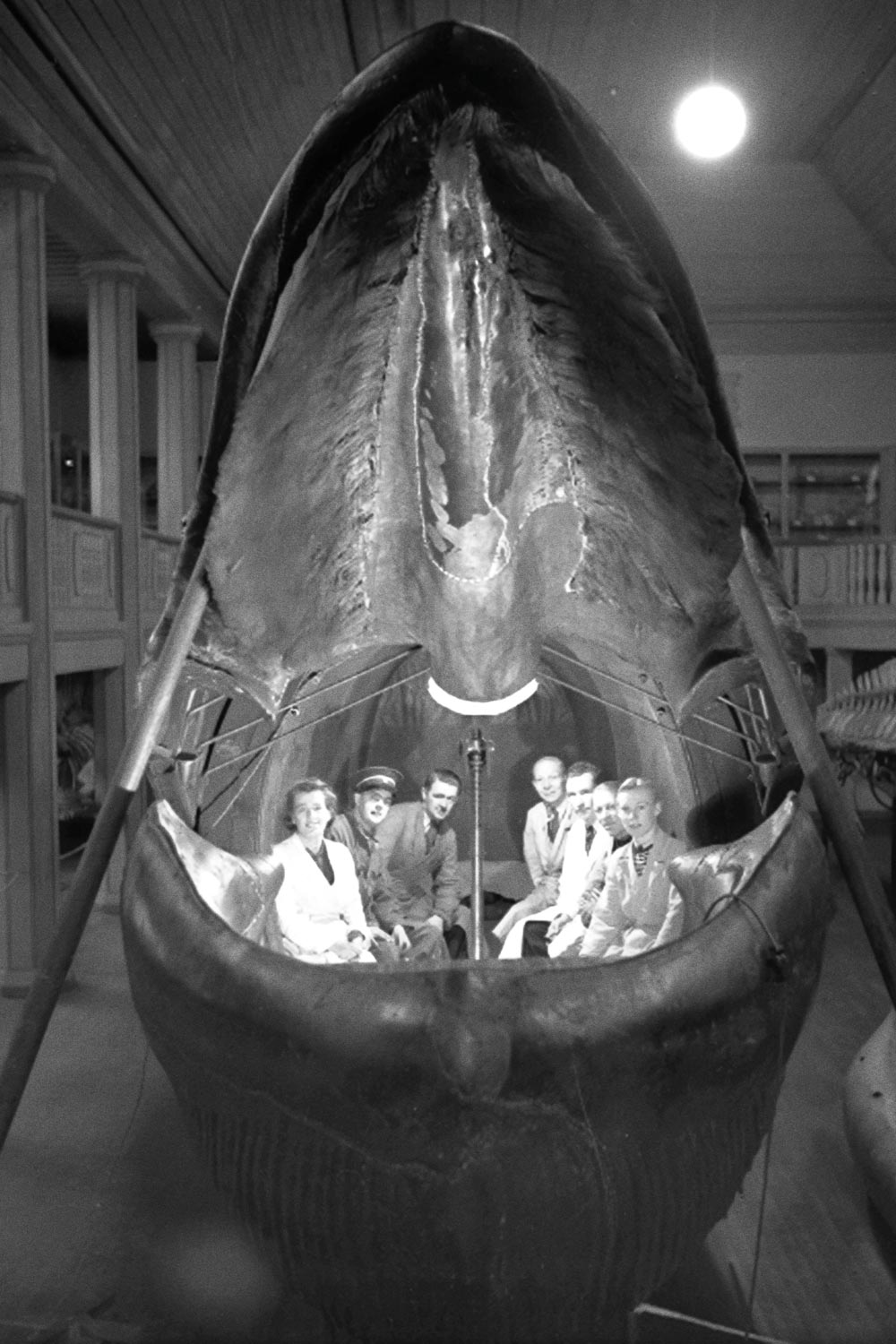
Poldi
In April 1951, Viennese passersby were astonished to see a whale sculpture being transported through the city on a flatbed truck. Poldi, as he would come to be known, was crafted in the war-damaged Schwarzspanierkirche by restorer Alois Robert Mucnjak-Hochland and his team. The bombed church's empty nave provided the only space large enough to construct the massive wooden skeleton, planking, and copper sheet skin. Working from designs by 25-year-old architect Maria Benke, they created a 1.37-tonne sculpture so lovingly detailed that decades later, restorers would marvel at the craftsmanship.[1]
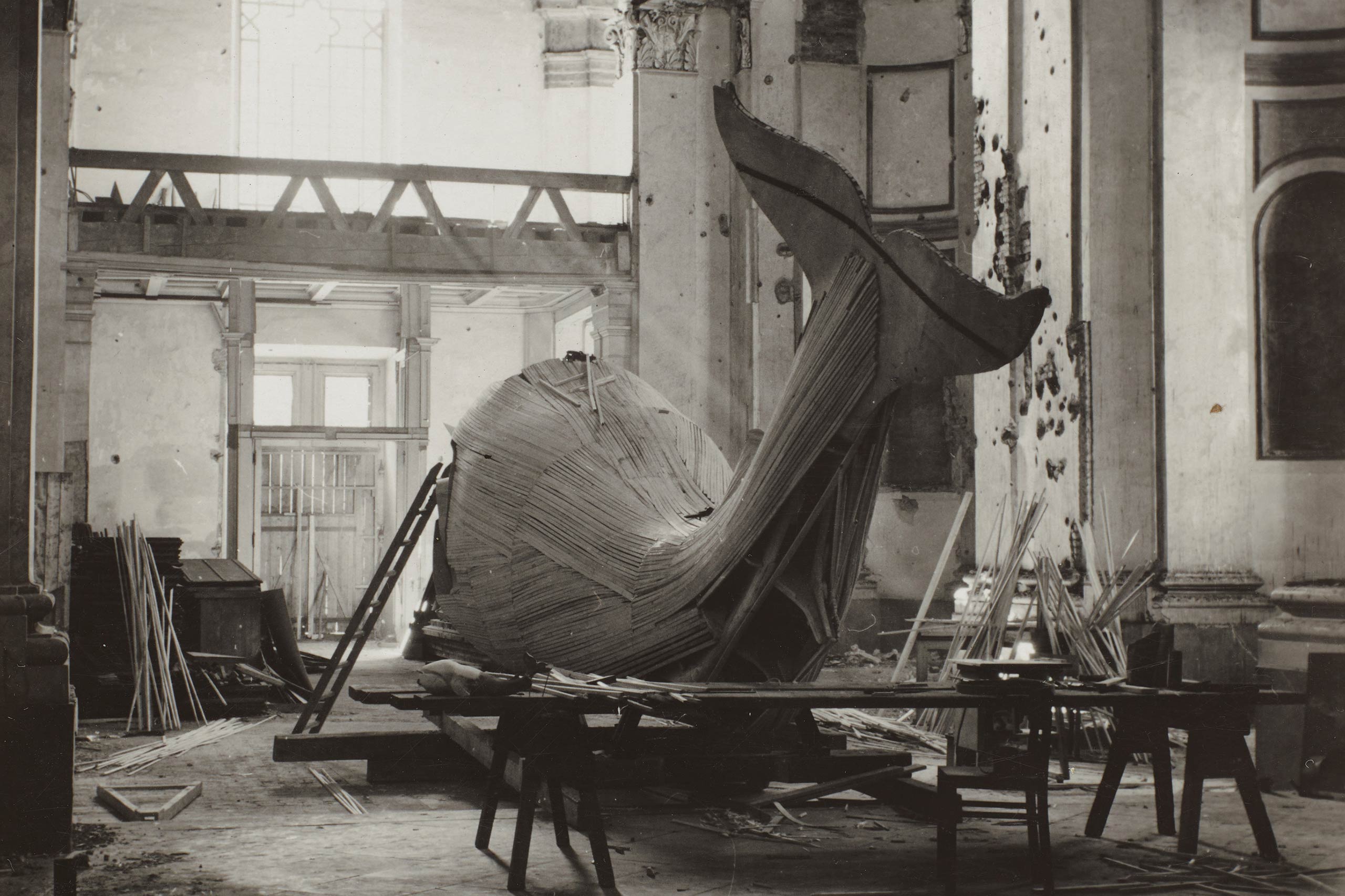
Originally mounted above the entrance to the Prater's "Zum Walfisch" beer garden, Poldi became a beloved fixture of Viennese everyday culture. People of vienna celebrated communions, graduations, and birthdays beneath him as he spouted water fountains from his blowhole. When the restaurant closed in 2013, Turkish-Austrian demolition contractor Güner Ayaz saved him from the scrapyard. After extensive restoration, Poldi was transported again in 2022—this time to the Wien Museum at Karlsplatz, where he has since become the museum's mascot.
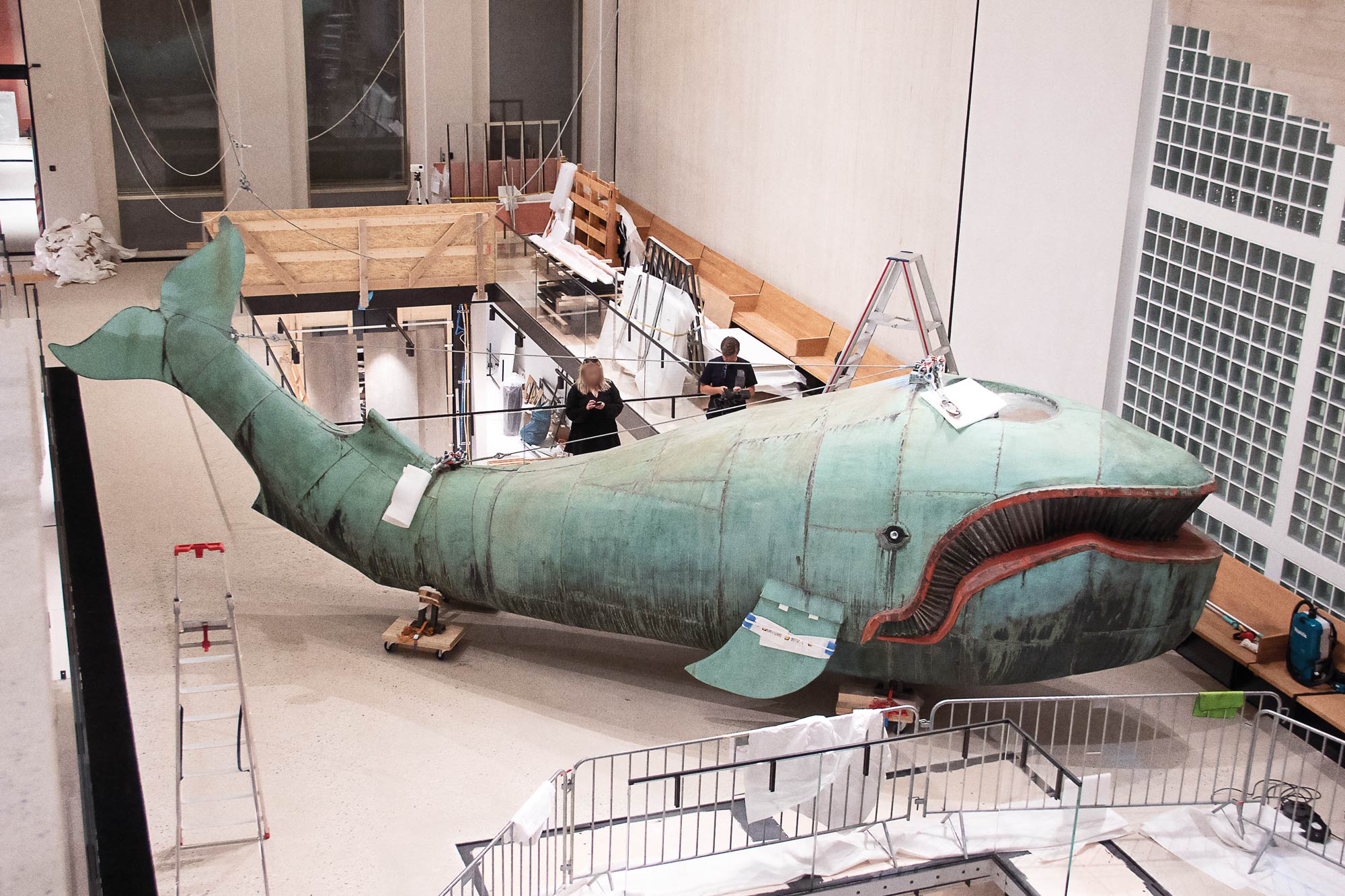
Malmska Valen
In October 1865, a young male blue whale beached near Gothenburg. Taxidermist August Wilhelm Malm preserved it whole. The hinged jaws opened to reveal an interior with wallpaper and wooden benches where visitors could step inside. As the whale toured Europe, rumors began to circulate. Secret parties in its belly. Romantic encounters in the darkness. The most persistent tale: a couple caught "making love" inside, ending public access in the 1930s.[2] The current custodian of the whale at Gothenburg's Natural History Museum admits most of this is legend. Still, our collaborative whale honors these whispered stories as its interior is fitted with a long table, transforming the belly into a creative space.
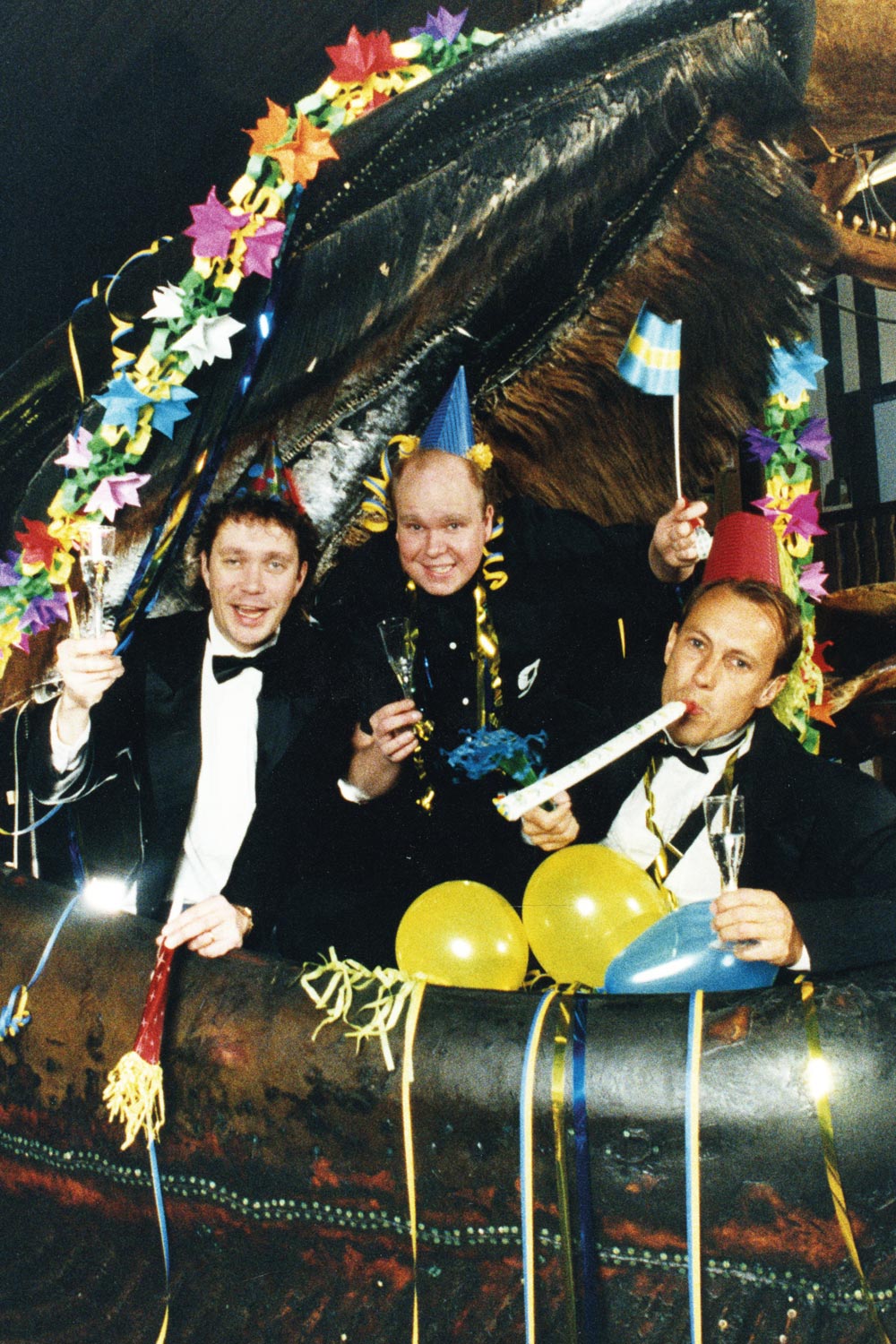
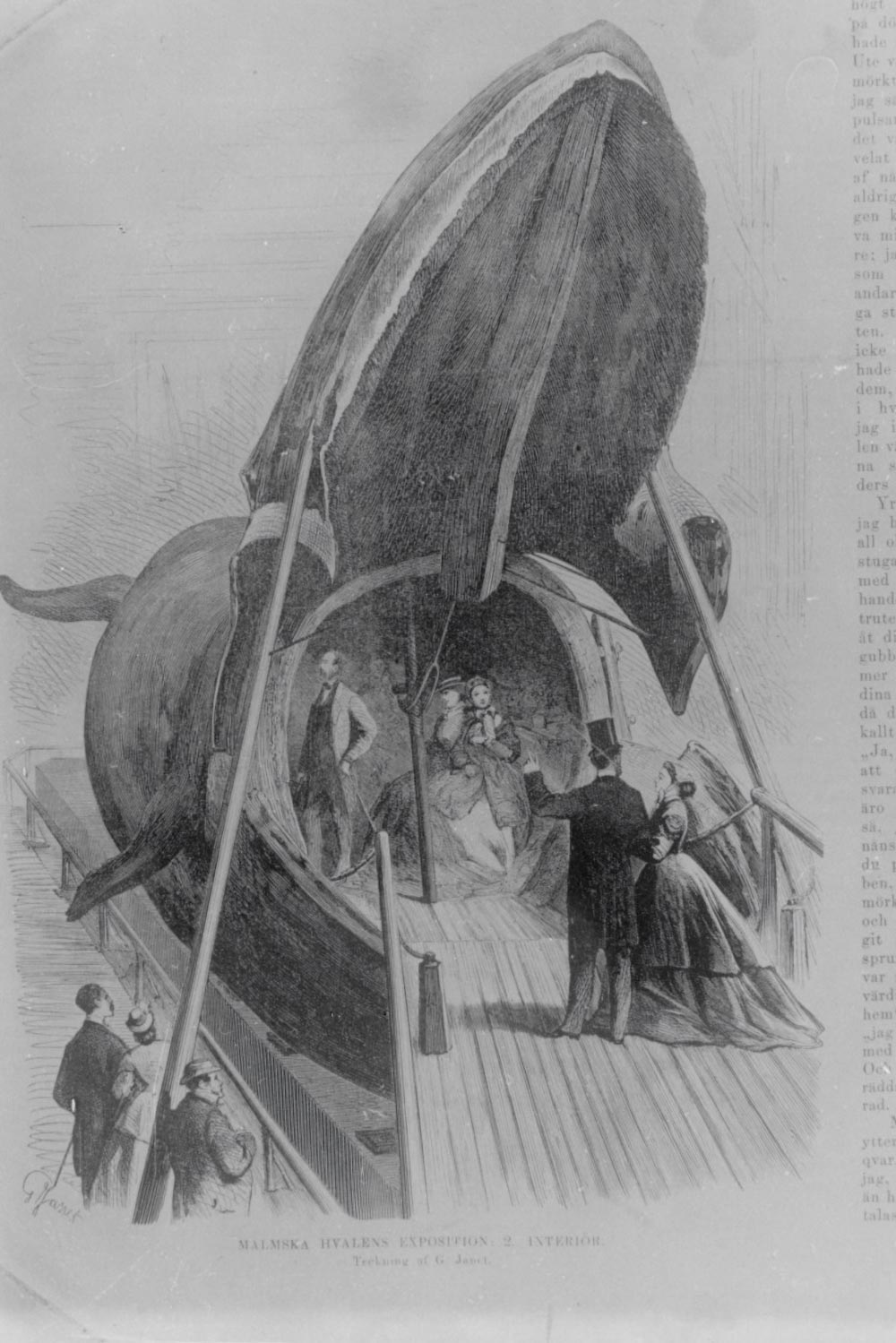
Visual Identity
A research trip to Vienna's Prater delivered the visual direction. The vintage carnival rides, worn by decades of use, revealed an aesthetic universe: fairy-tale-like yet edgy, nostalgic yet strangely liminal. Their hand-painted signage, ornate frames, and faded grandeur spoke a language somewhere between fairy tale and fever dream. I sketched a wavy Rotunda-Blackletter headline typeface. The resulting typography, like those rides themselves, became a vehicle, transporting viewers into an enchanted place.
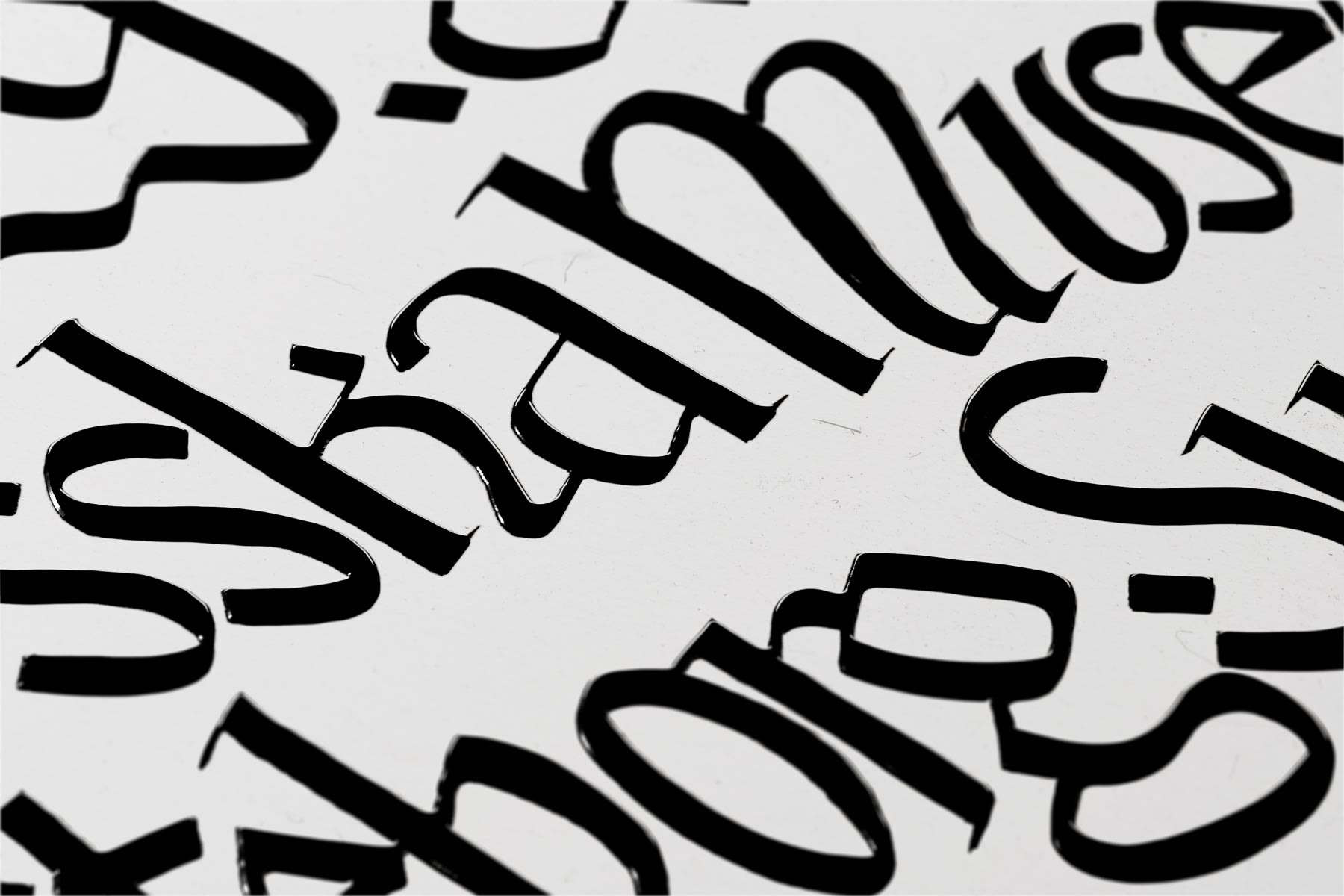
Poster Exploration
Apart from bringing our whale to Gothenburg's Röhsska Museum, we carried Poldis story with us. The Wien Museum provided astonishing footage by Bergen-Portisch documenting Poldi's construction in the bombed church. I paired this archival material with the Rotunda letterforms, creating compositions that felt atmospheric and historically weighty. But the result proved too dark, almost unsettling, kinda Robert Eggers even. The mood was compelling but not it in this case.
Considering the exhibition would become a vibrant, collaborative workspace where designers produce and present their work, I pivoted toward lightness. I attempted a flea-market aesthetic: playful, layered, accessible. But this approach fell flat. The compositions lacked depth and failed to convey the spatial quality we envisioned; something that hinted at the physical experience of stepping inside.


Final draft
The final draft took inspiration from one of our earliest sketches for the whale tent. In the beginning, we explored various approaches to creating such a massive structure using lightweight, convincing, and highly minimal materials that would also allow for easy transport. One concept involved layering suspended pieces of cloth that, much like an MRI scan, formed the inner funnel of the whale. These layers, combined with the typographic elements, create a mystical atmosphere that invites visitors to lose themselves within the exhibition space.
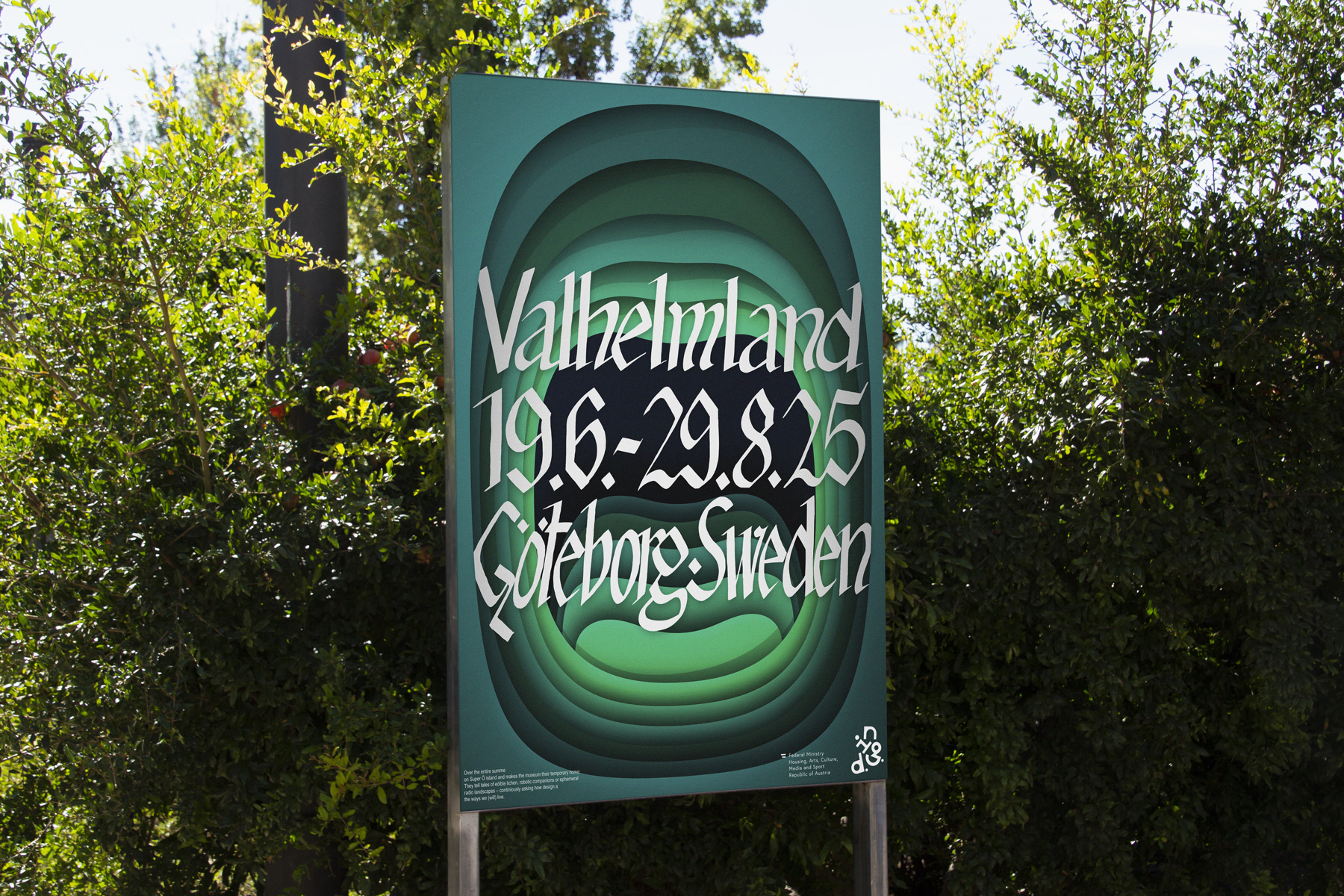
Wa(l)l texts
By combining the drawn letterforms with a clean grotesque and cutting the final typography in Vinylcut Foil, we translated the visual identity directly into the exhibition environment. The graphic system became an integrated part of the installation rather than a separate layer that only exists on IG and posters.
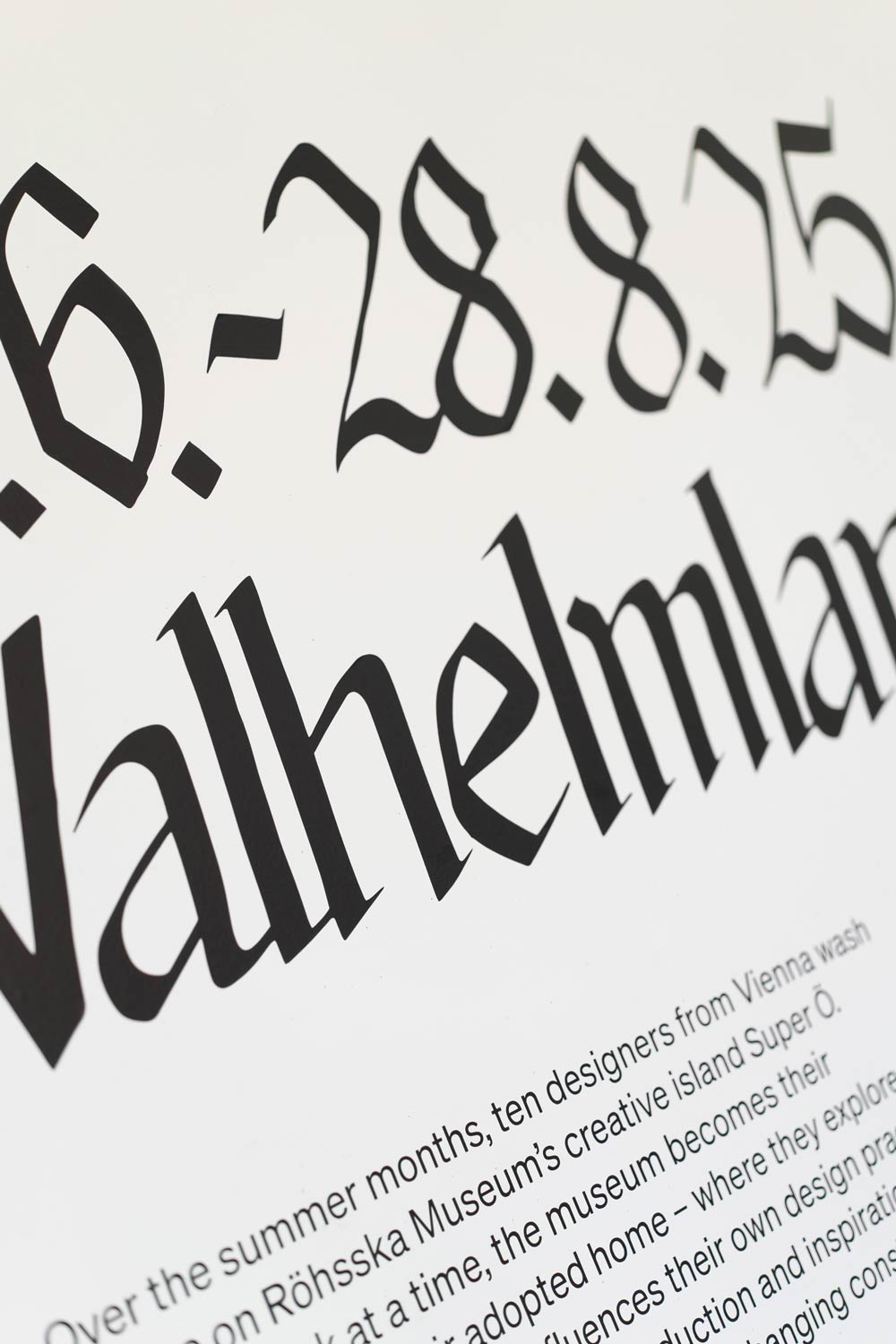
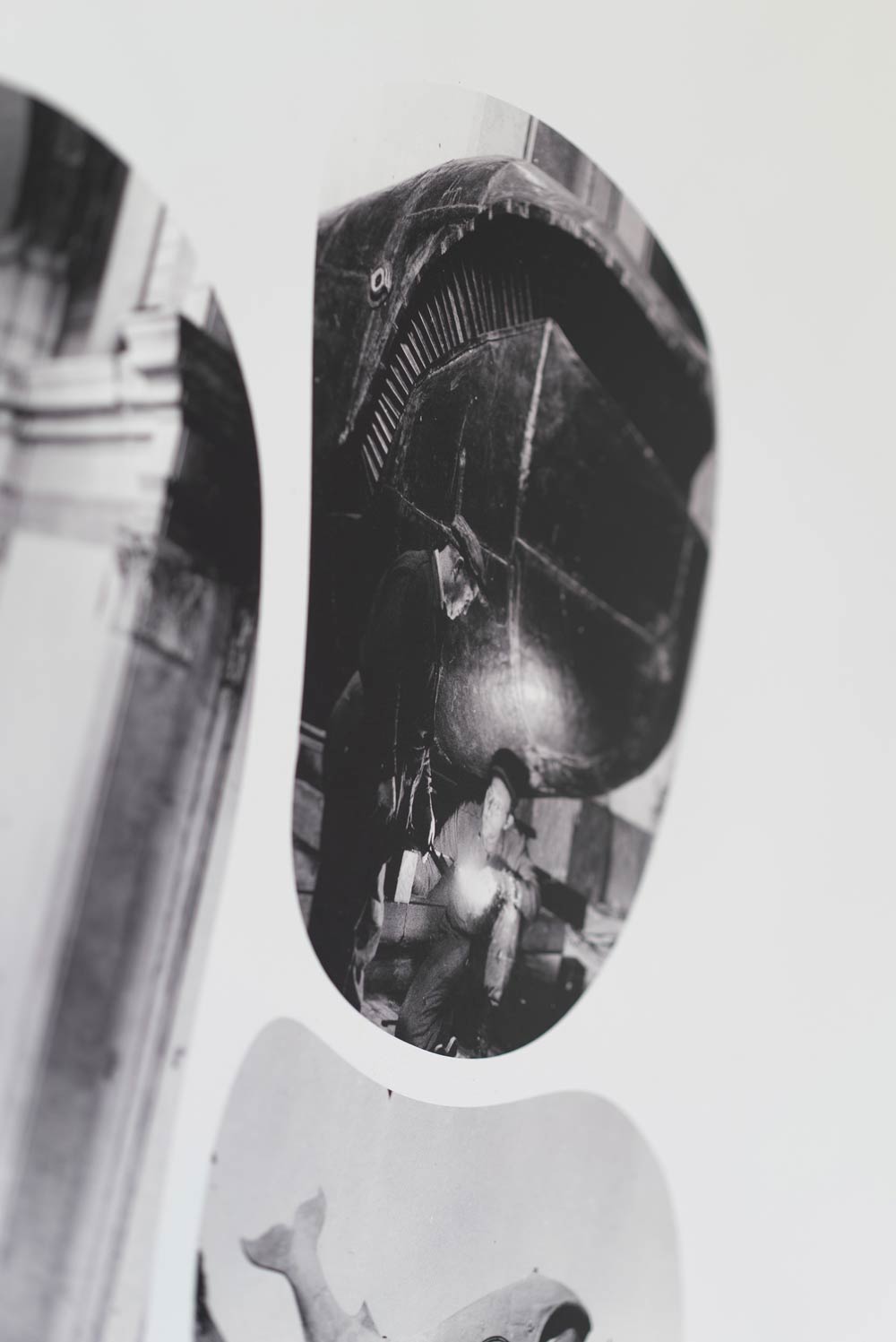

Credits
Valhelmland was a project initiated by Design in Gesellschaft, an association to promote the role of design as a cultural practice. It was funded by the Federal Ministry for Arts, Culture, Civil Service and Sport of the Republic of Austria as well as the Austrian Embassy of Sweden. Curation: Anna Hydén (Röhsska Museet), Production: Jessica Andersson Sjögerén (Röhsska Museet), Tech: Stefan Törner (Röhsska Museet), Design: Mia Meus, Leo Mühlfeld, Blanka Wittmann, Designers on site: Rimon Alyagon Darr, Franz Ehn, Lino Gaspartisch, Sophie Falkeis, Mia Meus, Leo Mühlfeld, Johanna Pichlbauer, Julia Schwarz, Blanka Wittmann, Márton Zalka.